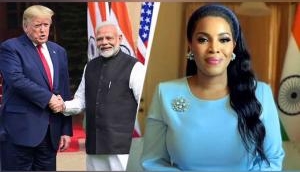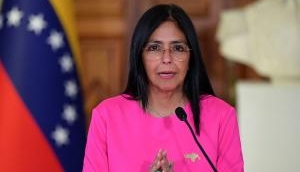Hassan Rouhani, nucelar deals and Iranian politics in the age of Donald Trump

Iran is a key actor in the making of the most pressing questions of today’s Middle East, including the Syria civil-war, reconstruction of Iraq, the Lebanese issue and the future of Shiite minority in the Persian Gulf region.
This being said, Iran is itself struggling with a number of domestic and international problems. The upcoming presidential election to be held in Iran in May 2017 reveals the increasing divisions among the Islamic Revolutionary elite.
President Hassan Rouhani, once backed by Supreme Leader Ayatollah Ali Khamenei, no longer seems to enjoy his full support or that of the Khamenei’s supporters in Parliament.
For the time being, the other members of the Iranian political nomenclature who have announced their nomination for the upcoming election are:
– Mostafa Mir-Salim, former minister of culture and Islamic guidance
– Mohammad Gharazi, former minister of post and minister of petroleum
– Hamid Baqai, former vice president of Iran
– Ezzatollah Zarghami, former head of Islamic Republic of Iran broadcasting
Among these Baqai is supported by former President Mahmoud Ahmadinejad.
Rouhani’s political success in being able to win a second presidency is assuredly related to the Iranian public’s judgment on whether his 2015 nuclear deal with the US, Russia and European powers has benefited Iranians economically.
Rouhani continues his presidential campaign today with the promise to provide greater benefits for the Iranians in the future. But he also continues to base his campaign on the view that the future of Iran lies in the opening up of the country to the outside world.
In addition to domestic political challenges, the difficult economic situation in Iran, caused by the international economic sanctions, has aggravated the problems the country is facing.
The long list of issues
It is true, that Rouhani’s government has been able to solve some of the deep-rooted problems of the Iranian economy, notably to get a few economic and financial sanctions relieved.
The rate of inflation in the past Iranian year has gone down to single-digit percentages and according to the Iranian Parliamentary Research Center, growth last year was 6.6%.
But in fact, despite the lifting of sanctions, the nuclear deal has not fully paid off. However, until now, the majority of Iranians have remained supportive of Rouhani’s deal because they realise that if the Iranian economy is to improve they need European investment.
But there are also many among the Iranian public who are disappointed because sanctions relief has not brought as much economic windfall as was promised. Most Iranians still want a pragmatic, moderate or a fully reformist president, especially because the final choice is between bad and worse, and it seems that the conservatives have nothing tangible to offer.
Nationalism issue
The conservatives meanwhile are trying to ply the card of Iranian nationalism against the Trump government and his harsh words concerning Iran and the nuclear deal.
Let us also not forget that with the death of Rafsanjani, Rouhani will find it harder than ever to secure the future of his negotiations with the West and to succeed in maintaining cordial ties with the leaders of Saudi Arabia, Iran’s principal rival in the Middle East.
However, the effect of the international sanctions on Iranian economy was accompanied by two other factors: one social and the other political.
The social factor dealt with the dramatic weakening of the Iranian middle class. As for the political factor, it was in relation with the gradual leadership vacuum in the reformist movement.
As such, even with the election of Hassan Rouhani in 2013, the Iranian reform movement was not able to get out of its long period of hibernation which started after the demise of the Green Movement in 2009.
As a result of all these factors, Iranian politics was confronted with a widening split between the factions in power, notably between the Supreme Leader Ayatollah Khamenei and other senior figures of the regime.
Rafsanjani’s sudden death was viewed by many inside and outside Iran the as tipping the domestic balance of power more in favour of the hardliners. Iranian politics is now living a post-Rafsanjani line-up which will is not only very complicated, but will also help shape the Iranian political arena in the coming years.
This is a key topic in international relations considering the participation of Iran in the numerous conflicts raging across the Middle East. One immediate concern is – what is likely to happen if Rouhani loses the Iranian presidential elections? The second concerns the anti-Iranian Trump diplomacy in the Middle East.
As Rouhani proceeds slowly toward ending his fourth year of the presidency in June 2017, there is no doubt that the battle for the new Iran will continue to overshadow the Khamenei-Trump political confrontation. But the ultimate test of Iranian presidential elections will be the life or death of Iranian pragmatic politics at a time when the country continues to face multiple domestic, economic and political challenges in the age of Trump.
First published: 27 March 2017, 18:20 IST





![BJP's Kapil Mishra recreates Shankar Mahadevan’s ‘Breathless’ song to highlight Delhi pollution [WATCH] BJP's Kapil Mishra recreates Shankar Mahadevan’s ‘Breathless’ song to highlight Delhi pollution [WATCH]](https://images.catchnews.com/upload/2022/11/03/kapil-mishra_240884_300x172.png)

![Anupam Kher shares pictures of his toned body on 67th birthday [MUST SEE] Anupam Kher shares pictures of his toned body on 67th birthday [MUST SEE]](https://images.catchnews.com/upload/2022/03/07/Anupam_kher_231145_300x172.jpg)






